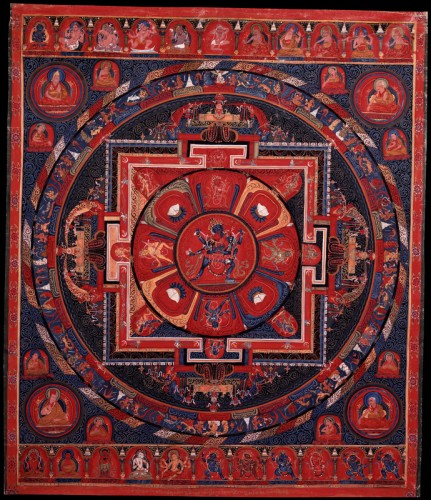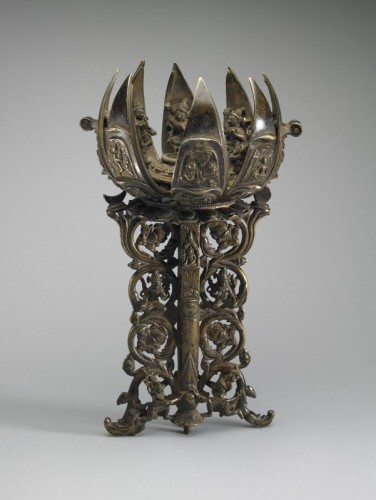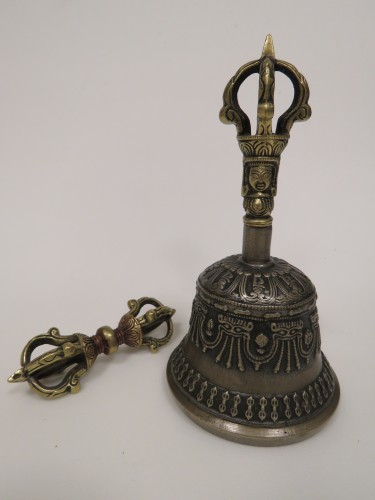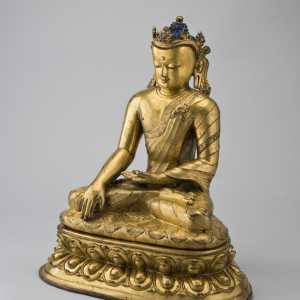
Updated on January 31, 2018.
Sometimes we find ourselves overly concerned with feelings about the past or anxieties about the future. At our weekly Mindfulness Meditation program, expert teachers like Sharon Salzberg and Tracy Cochran draw inspiration from the art in the Rubin’s galleries to illustrate lessons on mindfulness, which can help calm an anxious mind and reframe the present moment. If you’re struggling with anxiety, or you’re in need of some insight, check out three lessons we’ve learned from Mindfulness Meditation guides at the Rubin:
1) “When you notice that the thoughts are sweeping you away, gently bring the attention home again”¦ to the center”
—Tracy Cochran

During one of Tracy Cochran’s grounding meditation sessions, she focused on the physical and emotional control which meditation provides. As practitioners have been doing for centuries, modern mindfulness meditators focus their minds by “pulling it back to the center” in an attempt to achieve stability.
This 15th-century mandala is a representation of a cosmic palace. Practitioners use the mandala as a means to lay a path for their meditation, mentally building the palace and moving through it. Eventually, practitioners will visualize themselves at the center of the mandala, becoming one with the stable, enlightened deities that live there.
Hear Tracy Cochran’s full talk and guided meditation below:
2) “Out of the turmoil”¦ the uncertainty”¦ the greatest gifts can arise.”
—Sharon Salzberg

In an inspiring session, Sharon Salzberg discussed the Lotus Mandala sculpture in the Rubin collection to demonstrate how beauty and growth can develop from the darkest of places.
The lotus is a potent symbol in both Hinduism and Buddhism. Growing in ponds and rivers, the roots of the lotus flower extend deep into the mud found in riverbeds. The stem of the flower rises from the muck and exists in murky, dark waters. But once the stem reaches the surface of the water, it blooms into a beautiful flower.
Hear Sharon Salzberg’s full talk and guided meditation below:
3) “Every time we return to the breath”¦ it’s a way to drop concepts and come back to a direct body experience”
—Ethan Nichtern

Meditation leader Ethan Nichtern led a mindfulness group to investigate the way the mind wavers between direct sensory experiences and conceptual ones. When we are overcome with anxiety and fear, we lose touch with reality and focus heavily on hypotheticals and abstract concepts. As Nichtern explained, whether or not you’re a Buddhist, the Buddhist concept of emptiness helps us move past anxiety-inducing hypotheticals and connect more mindfully to our present experiences.
Paired with a vajra, the tantric bell (ghanta in Sanskrit) is one of the most common ritual implements found throughout Himalayan Buddhism. Symbolically, the hollowness of the bell’s dome creates a visual representation of emptiness which Buddhism teaches as fundamental to the nature of all phenomena. It is this specific wisdom of emptiness that according to Buddhism is essential in producing enlightenment.
Hear Ethan Nichtern’s full talk and guided meditation below:
This program is supported in part by the Hemera Foundation with thanks to our presenting partners Sharon Salzberg, the Interdependence Project and Parabola Magazine.



